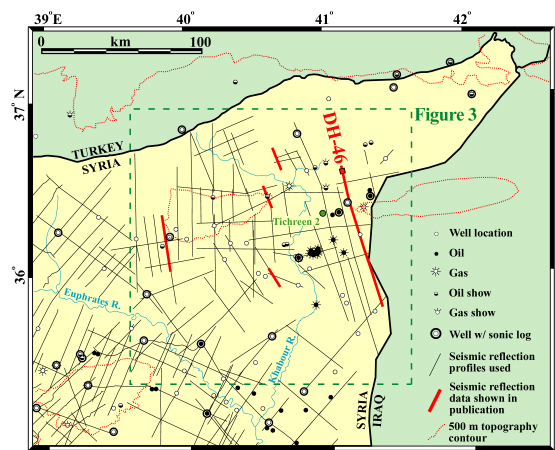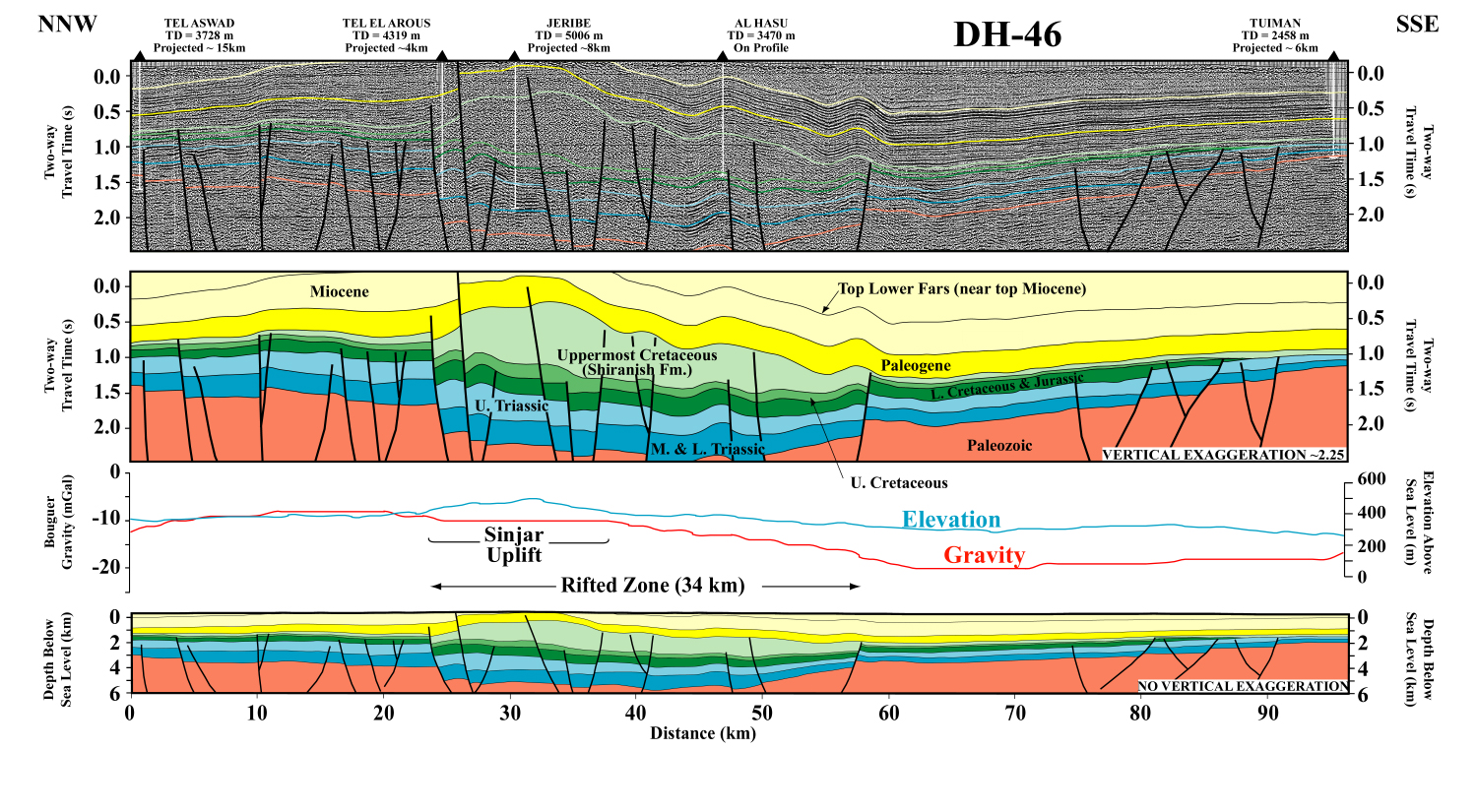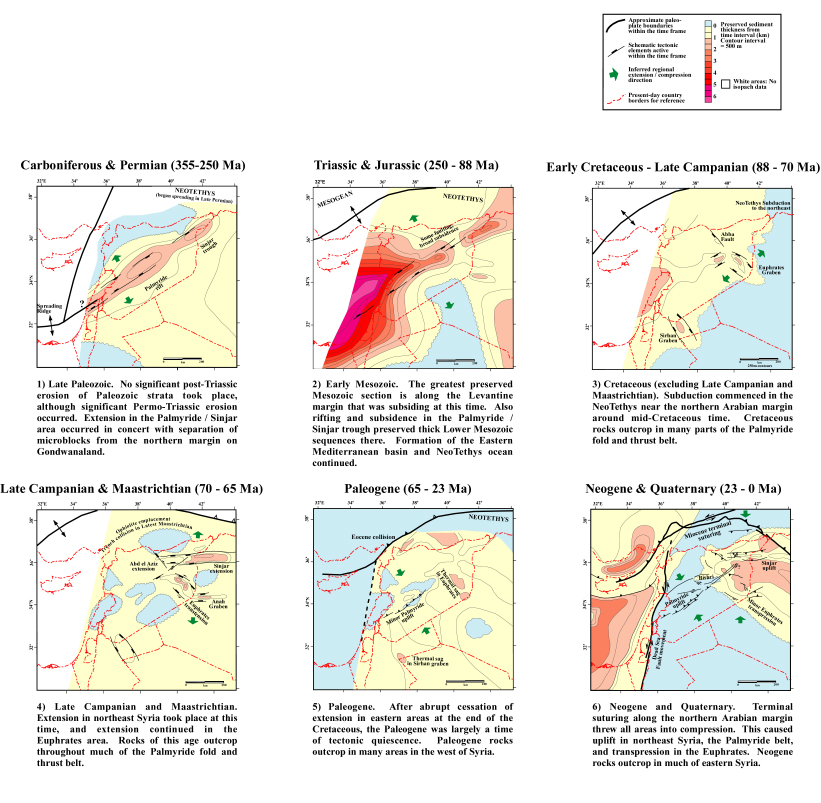Home | Results Summary | Publications | Participants | M.East / N.Africa Home
![]()
We present the Phanerozoic tectonic evolution of northeast Syria and incorporate the results into regional deformation models of the northern Arabian platform and nearby Arabian plate boundaries. Based on analysis of extensive seismic reflection profiles and well data, we interpret that the Sinjar - Abd el Aziz area in northeast Syria was subsiding under extension at various rates from the Carboniferous until the end of the Mesozoic, most markedly during the latest Cretaceous. The predominant basin through most of the Late Paleozoic and Mesozoic was SW-NE trending; this formed the northeast extension of the major Palmyride basin to the southwest. During the Late Cretaceous, extension in eastern Syria initiated along SE-NW and then E-W trends - possibly as a result of changing subduction geometries and plate motions in the NeoTethys to the northeast. The E-W striking faulting resulted in syntectonic deposition of up to ~1600 m of Late Campanian - Maastrichtian marly limestones in the Sinjar - Abd el Aziz area. The area was subjected to horizontal shortening throughout the Cenozoic, primarily during Plio-Pleistocene time, resulting in structural inversion along some of the faults. Although crustal shortening through the Syrian Sinjar and Abd el Aziz structures is relatively minor (~1%), this has been critical to hydrocarbon trap formation in Mesozoic and Cenozoic strata through the formation of fault-propagation folds. We present regional models that show the interrelated tectonic history of northeast Syria, the Palmyrides, and the Euphrates fault system are all inseparably linked to the polyphase opening and closing of the nearby NeoTethys ocean.
Figure 1: Database map of northeast Syria.

Figure 2: Seismic cross-section through Sinjar Uplift.

Figure 3: Three-dimensional cartoon showing the evolution of northeast Syria.

Figure 4: Schematic model for the tectonic evolution of the northern Arabian platform.

Go
back to Summary of Results
Go back to
Cornell Syria Project Welcome Page